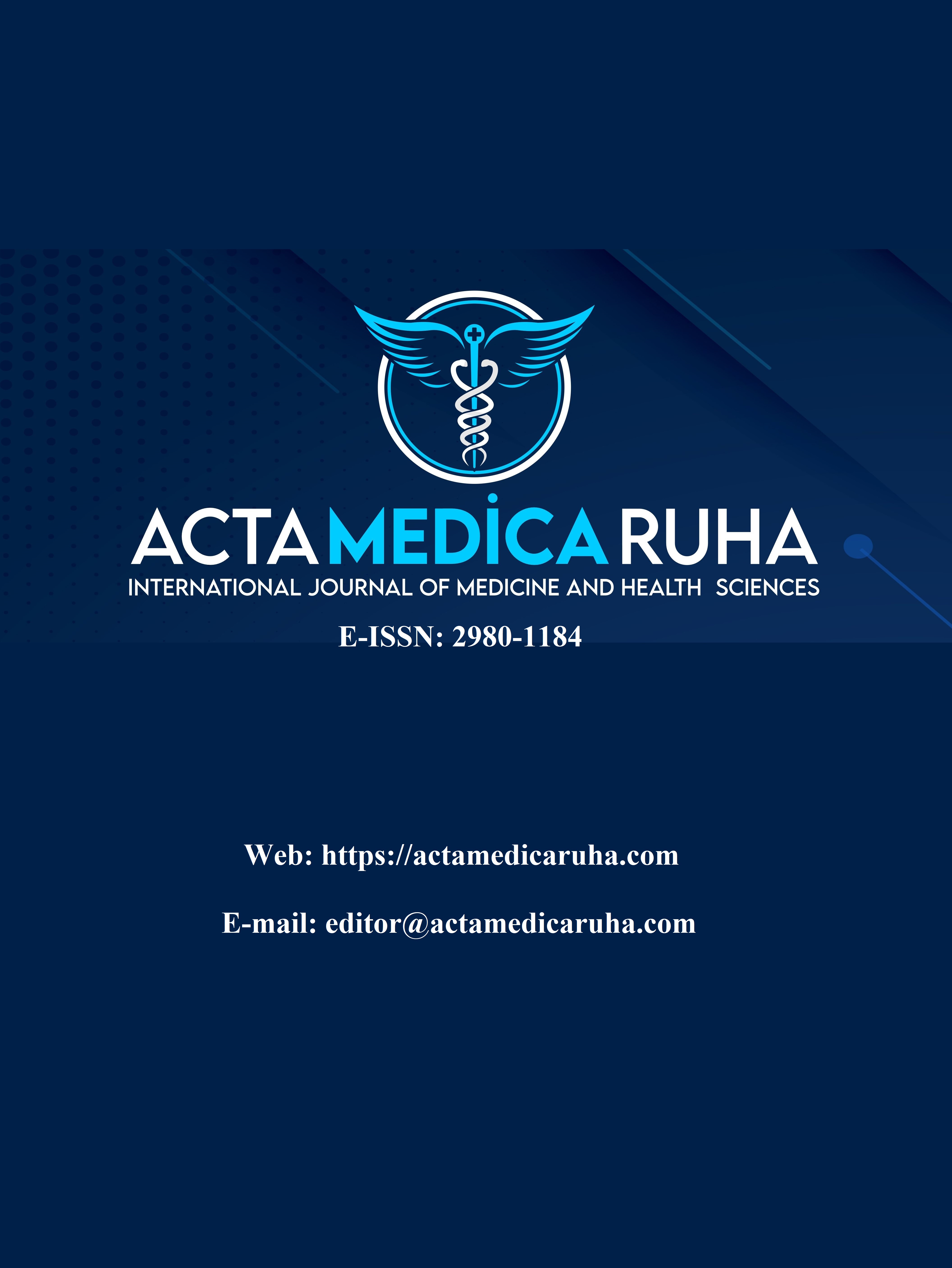Cardiovascular Diseases and in Diabetes importance of Fenofibrates and Statins
Review Article
DOI:
https://doi.org/10.5281/zenodo.11422588Keywords:
Cardiovascular Diseases, Statins, Fenofibrate, DiabetesAbstract
The prevalence and development of CVD is negatively influenced by behavioral, environmental and metabolic risk factors. The top three cardiovascular risk factors are high levels of low-density lipoprotein cholesterol (LDL-C) with 11%, dietary risks with 17% and high systolic blood pressure with 25% (1). Individuals with diabetes are in the higher risk group in terms of CVD. Therefore, it is desired to reduce LDL cholesterol. Statin support is initiated to reduce LDL cholesterol. This is because statin support has been shown to reduce lipid density, matrix metalloproteinase expression transferred to the environment through macrophages and inflammatory cell density in atherosclerotic plaques, prevent LDL oxidation and increase collagen fiber density. However, despite statin support, CVD risk persists in patients with diabetes. In addition, another objective for reducing this risk and preventing/improving CVD together with LDL cholesterol is triglycerides (TG). Because it has been explained that there is a causal link between high TG levels and CVD. Fenofibrate is a peroxisome proliferator-activated receptor alpha (PPARa) activator and has lipid, especially TG-lowering activity. However, the function of fibrates is controversial and still not clearly explained. Fibrates are recommended for patients with dyslipidemia who have high triglycerides despite statin administration. Fenofibrate has therefore primarily been considered as an alternative to statins for lowering TG levels in patients with diabetes.
References
Roth GA, Mensah GA, Johnson CO, et al. Global burden of cardiovascular diseases and risk factors, 1990–2019: update from the GBD 2019 Study. J Am Coll Cardiol. 2020;76(25):2982–3021. doi: 10.1016/j.jacc.2020.11.010.
World Health Organization (WHO) Noncommunicable diseases. https://www.who.int/news-room/fact-sheets/detail/noncommunicable-diseases/ (Erişim Tarihi: 20.05.2024).
Michaeli DT, Michaeli JC, Albers S, Boch T, Michaeli T. Established and Emerging Lipid-Lowering Drugs for Primary and Secondary Cardiovascular Prevention. Am J Cardiovasc Drugs. 2023;23(5):477–495. doi: 10.1007/s40256-023-00594-5.
Khaw KT, Wareham N, Bingham S, Luben R, Welch A, Day N. Association of hemoglobin A1c with cardiovascular disease and mortality in adults: the European prospective investigation into cancer in Norfolk. Ann Intern Med. 2004;141(6):413–420. doi: 10.7326/0003-4819-141-6-200409210-00006.
Ference BA, Kastelein JJP, Ray KK, et al. Association of triglyceride-lowering LPL variants and LDL-C-lowering LDLR variants with risk of coronary heart disease. JAMA. 2019;321(4):364–373. doi: 10.1001/jama.2018.20045.
Liao JK. Beyond lipid lowering: the role of statins in vascular protection. Int. J. Cardiol. 2002;86(1):5–18. doi: 10.1016/s0167-5273(02)00195-x.
Watts GF, Ooi EM, Chan DC. Demystifying the management of hypertriglyceridaemia. Nat Rev Cardiol 2013;10(11):648–661. doi: 10.1038/nrcardio.2013.140.
Waldman B, Ansquer JC, Sullivan DR, et al. FIELD investigators. Effect of fenofibrate on uric acid and gout in type 2 diabetes: a post-hoc analysis of the randomised, controlled FIELD study. Lancet Diabetes Endocrinol 2018;6(4):310–318. doi: 10.1016/S2213-8587(18)30029-9.
Yüksel H. Statin-fibrat kombinasyon tedavisi. Türk Kardiyoloji Derneği Arşivi 2005;33(3):170-6.
Keech A, Simes RJ, Barter P, et al. Effects of long-term fenofibrate therapy on cardiovascular events in 9795 people with type 2 diabetes mellitus (the FIELD study): randomised controlled trial. Lancet. 2005;366(9500):1849-61. doi: 10.1016/S0140-6736(05)67667-2.
Ginsberg HN, Elam MB, Lovato LC, et al. ACCORD Study Group. Effects of combination lipid therapy in type 2 diabetes mellitus. N Engl J Med. 2010;362(17):1563–1574. doi: 10.1056/NEJMoa1001282.
Cziraky MJ, Willey VJ, McKenney JM, et al. Statin safety: an assessment using an administrative claims database. Am J Cardiol. 2006;97(8A):61C-8C. doi: 10.1016/j.amjcard.2005.12.011.
Katsiki N, Nikolic D, Montalto G, Banach M, Mikhailidis DP, Rizzo M. The role of fibrate treatment in dyslipidemia: an overview. Curr Pharm Des. 2013;19(17):3124-31. doi: 10.2174/1381612811319170020.
Popławski J, Łozowicka B, Dubis AT, et al, Synthesis and hypolipidemic and antiplatelet activities of alpha-asarone isomers in humans (in vitro), mice (in vivo), and rats (in vivo). J Med Chem. 2000;43(20):3671-6. doi: 10.1021/jm000905n.
McKeage K, Keating GM. Fenofibrate: a review of its use in dyslipidaemia. Drugs. 2011;71(14):1917-46. doi: 10.2165/11208090-000000000-00000.
Varol E, Baykal Z, Köroğlu BK, Özaydın M, Altınbaş A. Dislipidemik hastalarda 4 haftalýk kýsa dönem günde tek doz 200 mg mikronize fenofibrat tedavisinin etkinlik ve güvenilirliği. Medical Journal of Süleyman Demirel University. 2004;11(3):12-15.
Chen YQ, Zhao SP, Ye HJ. Efficacy and safety of coenzyme A versus fenofibrate in patients with hyperlipidemia: a multicenter, double-blind, double-mimic, randomized clinical trial. Curr Med Res Opin. 2020;36(6):941-945. doi: 10.1080/03007995.2020.1747416.
Vinarov Z, Katev V, Radeva D, Tcholakova S, Denkov ND. Micellar solubilization of poorly water-soluble drugs: effect of surfactant and solubilizate molecular structure. Drug Dev Ind Pharm. 2018;44(4):677-686. doi: 10.1080/03639045.2017.1408642.
Pedersen TR, Kjekshus J, Berg K, et al. Randomised trial of cholesterol lowering in 4444 patients with coronary heart disease: the Scandinavian Simvastatin Survival Study (4S). 1994. Atheroscler Suppl. 2004;5(3):81-7. doi: 10.1016/j.atherosclerosissup.2004.08.027.
Schachter M. Chemical, pharmacokinetic and pharmacodynamic properties of statins: an update. Fundam Clin Pharmacol, 2005;19(1);117-125. doi: 10.1111/j.1472-8206.2004.00299.x.
Vaughan CJ, Gotto AM, Basson CT. The evolving role of statins in the management of atherosclerosis. J Am Coll Cardiol. 2000;35(1):1-10. doi: 10.1016/s0735-1097(99)00525-2.
Almeida SO, Budoff M. Effect of statins on atherosclerotic plaque. Trends Cardiovasc Med. 2019;29(8):451-455. doi: 10.1016/j.tcm.2019.01.001.
Sirtori CR. The pharmacology of statins. Pharmacol Res. 2014;88:3-11. doi: 10.1016/j.phrs.2014.03.002.
Tobias D, corresponding M, Michaeli JC, Albers S, Boch Tobias, Michaeli T. Established and Emerging Lipid-Lowering Drugs for Primary and Secondary Cardiovascular Prevention. Am J Cardiovasc Drugs. 2023;23(5):477–495. doi: 10.1007/s40256-023-00594-5.
Khera AV, Everett BM, Caulfield MP, et al. Lipoprotein(a) concentrations, rosuvastatin therapy, and residual vascular risk: an analysis from the JUPITER Trial (Justification for the Use of Statins in Prevention: an Intervention Trial Evaluating Rosuvastatin) Circulation. 2014;129(6):635–642. doi: 10.1161/CIRCULATIONAHA.113.004406.
Davignon J. Beneficial cardiovascular pleiotropic effects of statins. Circulation. 2004;109(23 Suppl 1):III39-43. doi: 10.1161/01.CIR.0000131517.20177.5a.
Oesterle A, Laufs U, Liao JK. Pleiotropic Effects of Statins on the Cardiovascular System. Circ Res. 2017;120(1):229–243. doi: 10.1161/CIRCRESAHA.116.308537.
Baigent C, Blackwell L, Emberson J, et al. Efficacy and safety of more intensive lowering of LDL cholesterol: a meta-analysis of data from 170,000 participants in 26 randomised trials. Lancet Lond Engl. 2010;376(9753):1670-81. doi: 10.1016/S0140-6736(10)61350-5.
Mihaylova B, Emberson J, Blackwell L, et al. The effects of lowering LDL cholesterol with statin therapy in people at low risk of vascular disease: meta-analysis of individual data from 27 randomised trials. Lancet Lond Engl. 2012;380(9841):581-90. doi: 10.1016/S0140-6736(12)60367-5.
Bytyçi I, Penson PE, Mikhailidis DP, et al. Prevalence of statin intolerance: a meta-analysis. Eur Heart J. 2022;43(34):3213–3223. doi: 10.1093/eurheartj/ehac015.
Saeed A, Feofanova EV, Yu B, et al. Remnant-like particle cholesterol, low-density lipoprotein triglycerides, and incident cardiovascular disease. J Am Coll Cardiol 2018;72(2):156–169.
Holm LJ, Krogvold L, Hasselby JP, et al. Abnormal islet sphingolipid metabolism in type 1 diabetes. Diabetologia. 2018;61(7):1650–61. doi: 10.1007/s00125-018-4614-2.
Zheng S, Ren X, Han T, et al. Fenofibrate attenuates fatty acid-induced islet beta-cell dysfunction and apoptosis via inhibiting the NF-kappaB/MIF dependent inflammatory pathway. Metabolism. 2017;77:23–38. doi: 10.1016/j.metabol.2017.09.001.
Jo S-H, Nam H, Lee J, Park S, Lee J, Kyoung D-S. Fenofibrate Use Is Associated With Lower Mortality and Fewer Cardiovascular Events in Patients With Diabetes: Results of 10,114 Patients From the Korean National Health Insurance Service Cohort. Diabetes Care 2021;44(8):1868–1876. doi: 10.2337/dc20-1533.
JP Ferreira, Vasques-Nóvoa F, Ferrão D, et al. Fenofibrate and Heart Failure Outcomes in Patients With Type 2 Diabetes: Analysis From ACCORD. Diabetes Care 2022;45(7):1584–1591. doi: 10.2337/dc21-1977.
Ichihara S, Obata K, Yamada Y, et al. Attenuation of cardiac dysfunction by a PPAR-alpha agonist is associated with down-regulation of redox-regulated transcription factors. J Mol Cell Cardiol. 2006;41(2):318–29. doi: 10.1016/j.yjmcc.2006.05.013.
Downloads
Published
How to Cite
Issue
Section
License
Copyright (c) 2024 Acta Medica Ruha

This work is licensed under a Creative Commons Attribution 4.0 International License.









